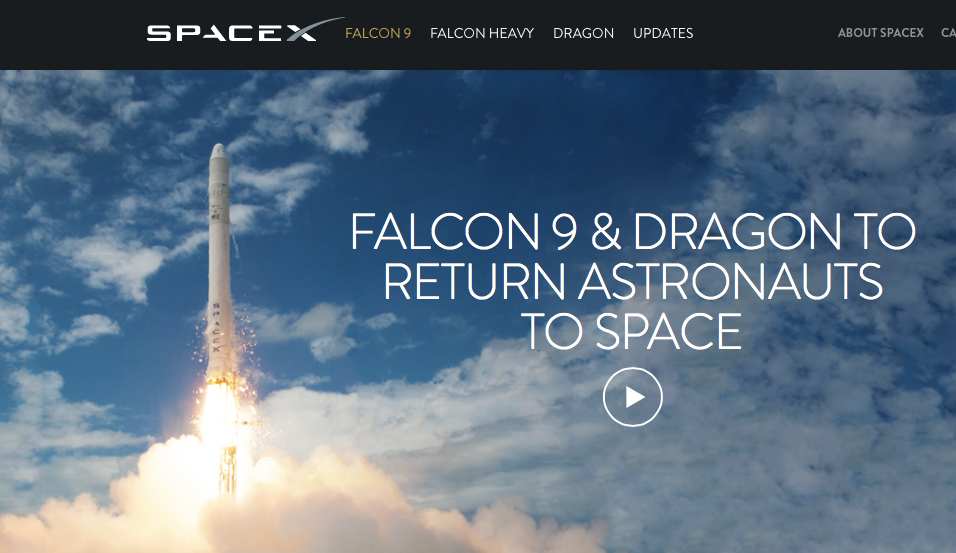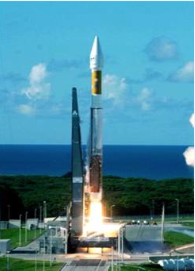[SatNews] "To put this into perspective, had SpaceX been awarded the missions ULA received under its recent non-competed 36 core block buy, we would have saved the taxpayer $11.6 billion. "
Oral Statement
Elon Musk,CEO & Chief Designer
Space Exploration Technologies Corp. (SpaceX)
Before the Committee on Appropriations Subcommittee on Defense
U.S. Senate
March 5, 2014
Mr. Chairman, Ranking Member Cochran, and Members of the Committee, thank you for the opportunity to appear before this Committee today.

SpaceX was founded to radically improve space transport technology, with particular regard to reliability, safety and affordability. Today, it is one of the leading aerospace companies in the world, with nearly 50 missions contracted at a total value of approximately $5 billion. We have launched our Falcon 9 rocket eight times with 100% mission success, including four launches for NASA, three to the International Space Station, and sophisticated geostationary spacecraft for the world’s leading satellite companies.
At this time, SpaceX is a preferred launch services provider for customers worldwide. We are unilaterally restoring America’s competitiveness in the global commercial space launch market as the only US company consistently winning head-to-head competitions for launch opportunities at the world-class level.
With respect to the EELV Program, I have five specific points:
1. The Air Force and other agencies are paying too high a price for launch. The impacts of relying on a monopoly provider since 2006 were predictable, and they have been borne out. Space launch innovation has stagnated. Competition has been stifled. And prices have risen to levels that General William Shelton has himself called “unsustainable.” I commend the United Launch Alliance (ULA) on its launch successes to date. However, year after year, ULA has increased its prices. It has behaved consistent with the structures and incentives of the existing EELV program. In FY13 the Air Force paid on average in excess of $380 million for each national security launch, while subsidizing ULA’s fixed costs to the tune of more than $1 billion per year, even if the company never launches a rocket. By contrast, SpaceX’s Falcon 9 price for an EELV mission is well under $100M—at least a $280 million per launch difference, which in many cases could pay for the satellite and launch combined – and SpaceX seeks no subsidies to maintain our business. To put this into perspective, had SpaceX been awarded the missions ULA received under its recent non-competed 36 core block buy, we would have saved the taxpayer $11.6 billion. Recently, there have been claims that the Air Force's block buy of 36 booster cores from ULA will save the taxpayer "$4.4 billion over the next several years." If you accept ULA’s claimed $4.4B in savings, then you must also accept that, using the same baseline, the absence of full and open competition resulted in a $7.2B penalty to the taxpayer, and untold consequences for important defense priorities that might otherwise have been funded.
2. Competition is coming to the national security launch market, but it remains a question as to when and how. SpaceX is ready now to

Expendable Launch Vehicle, known as EELV, is designed to improve our nation¡¦s access to space by making space launch vehicles more affordable and reliable. The program is replacing the existing fleet of launch systems with two families of launch vehicles, each using common components and common infrastructure.
compete with our Falcon 9. In order to be certified as an EELV provider, SpaceX has had to meet a number of requirements that were never demanded of the incumbent provider. To begin, we were required to successfully launch three flights of our upgraded Falcon 9 launch vehicle, a requirement we achieved with consecutive successful flights in September, December and January—at no cost to the taxpayer. Under our EELV Certification agreement, we are undertaking various and vigorous engineering reviews with the Air Force. To date, we have delivered more than 30,000 data items to the Air Force and provided total access to our internal systems to more than 300 Government officials for certification. We are hopeful that the Air Force will work expeditiously so that we can compete this calendar year.
3. Robust competition must begin this calendar year. We applaud the early steps the Air Force and NRO have taken to reintroduce competition into the EELV program. In 2012, the Air Force under direction from the Secretary of Defense committed to competing up to 14 missions from FY15 to FY17, with 5 missions available for competition this year, subject to New Entrant certification. We would have greatly preferred that the Air Force open all of its missions for competition, and now we have serious concerns that it may not be the case that 5 missions will be openly competed this year. Undersecretary Kendall’s acquisition directive is quite specific about the need to “aggressively” introduce competition. His directive does not require buying 36 cores from ULA. To be clear, every mission capable of being launched by qualified new entrants should be competed this year and every year moving forward. There should be no more sole sourcing under this program when competition is an option.
4. With the advent of competition, launch should be competed as a commodity, and any competition between New Entrants and ULA should properly acknowledge the launch subsidy received by the incumbent. Consistent with federal procurement regulations and DOD acquisition directives, when a competitive environment exists, the Government should utilize firm, fixed-price, FAR Part 12 contracts that properly incent contractors to deliver on-time and on-budget. That also means eliminating $1 billion subsidies to the incumbent, as those subsidies create an extremely unequal playing field.
5. Our Falcon 9 and Falcon Heavy launch vehicles are truly made in America. We design and manufacture the rockets in California and Texas, with key suppliers throughout the country, and launch them from either Vandenberg AFB or Cape Canaveral AFS. This stands in stark contrast to the United Launch Alliance’s most frequently flown vehicle, the Atlas V, which uses a Russian main engine and where approximately half the airframe is manufactured overseas. In light of Russia’s de facto annexation of the Ukraine’s Crimea region and the formal severing of military ties, the Atlas V cannot possibly be described as providing “assured access to space” for our nation when supply of the main engine depends on President Putin’s permission. Given this development, it would seem prudent to reconsider whether the 36 core uncompeted, sole source award to ULA is truly in the best interests of the people of the United States.
I thank the Committee for this opportunity and look forward to addressing any questions you may have.
This statement can be seen here.

